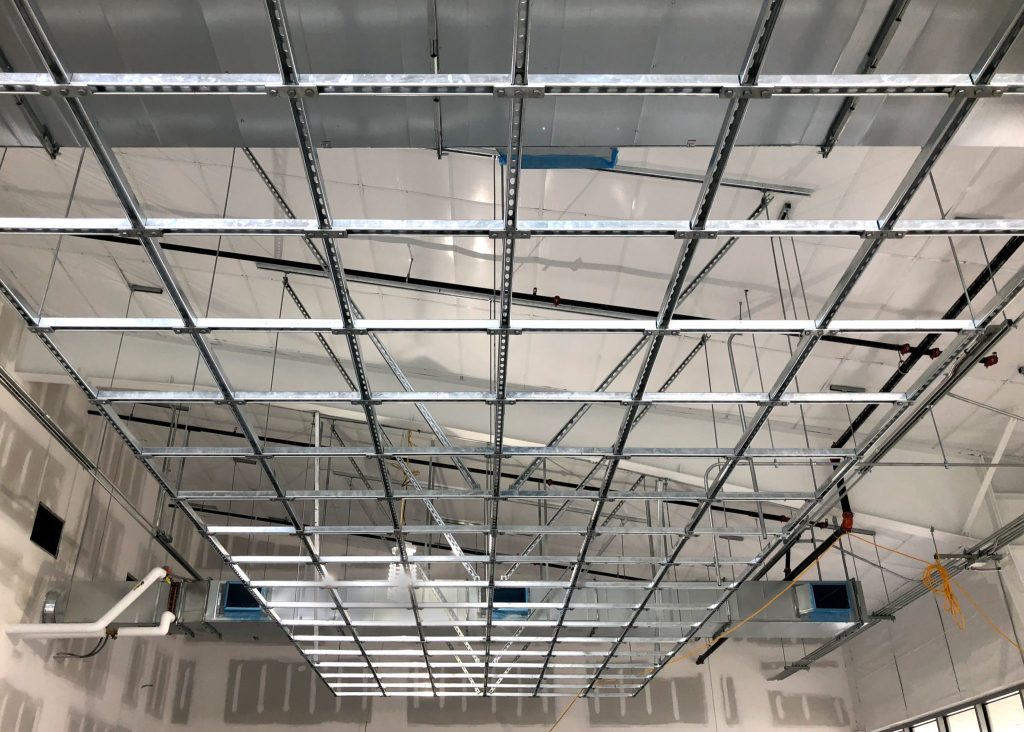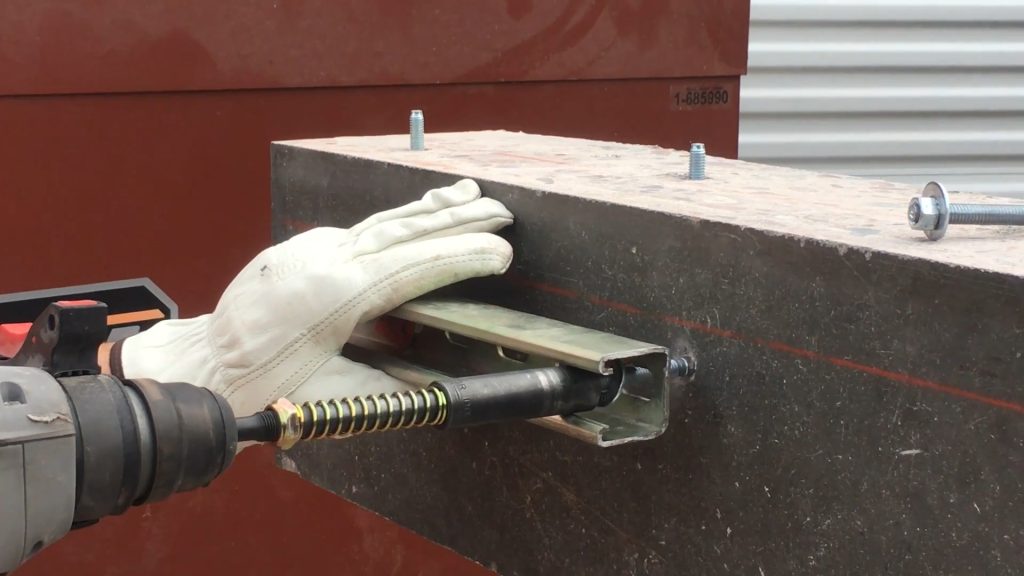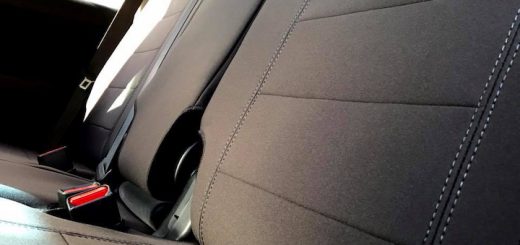Unistrut Channels: Popular Uses and Key Installation Tips
Strut channels, also known as strut, Unistrut, or metal framing channels, are versatile components used in construction and industrial applications for supporting, framing, and organizing various fixtures, equipment, and utilities. They consist of long, straight metal channels with standardized dimensions and configurations, typically made of galvanized steel, stainless steel, or aluminium.
Popular Uses for Strut Channels

Here are several common uses of strut channels:
Supporting Electrical Conduit and Cable Tray
Unistrut channels are widely employed to mount electrical conduits, cable trays, and other cable management systems in commercial and industrial buildings. The channels provide a stable framework for running and organizing electrical wiring, facilitating maintenance and reducing the risk of damage.
Framework for HVAC Systems
In heating, ventilation, and air conditioning (HVAC) installations, strut channels serve as a sturdy framework for supporting ductwork, piping, and HVAC equipment. They provide a reliable mounting solution for air handlers, ductless mini-split systems, and other HVAC components, ensuring proper alignment and support.
Mounting Equipment and Fixtures
Strut channels are often utilized to mount heavy equipment, fixtures, and machinery securely. Examples include supporting air compressors, pumps, motors, and heavy-duty shelving units in industrial facilities, warehouses, and workshops. The channels’ adjustable nature allows for easy repositioning or modification as needed.
Solar Panel Installation
In solar energy systems, unistrut channels play a crucial role in supporting and securing solar panels on rooftops or ground-mounted arrays. Solar panel mounting systems typically incorporate unistrut strut channels to provide a robust framework for attaching the panels while optimizing their orientation for maximum sunlight exposure.
Structural Framing in Construction
Builders and contractors use a unistrut channel as a structural component in framing systems for ceilings, walls, and partitions. By connecting strut channels with compatible fittings such as strut brackets, clamps, and connectors, construction professionals can create custom frameworks for a wide range of applications, from suspended ceilings to equipment enclosures.
Pipe and Plumbing Support
In plumbing and piping installations, strut channels such as pipe ferrules and pipe hangers are employed to support and secure pipes, tubing, and plumbing fixtures. Whether for water supply, drainage, or gas lines, the channels provide a stable mounting platform for routing and organizing piping systems in residential, commercial, and industrial settings.
Cable Management and Raceways
Beyond electrical conduit, strut channels are utilized for managing various types of cables, including data cables, communication cables, and security system wiring. Cable management accessories such as cable trays, cable clamps, and cable ties can be attached to unistrut channels to organize and route cables neatly along walls, ceilings, or equipment racks.
Industrial Racking and Shelving
Strut channels are integral components in the construction of industrial racking and shelving systems. By combining channels with compatible fittings and accessories, such as beams, braces, and decking panels, manufacturers can create customizable storage solutions for warehouses, distribution centres, and manufacturing facilities.
Suspension Systems for Suspended Ceilings
In commercial and institutional buildings, strut channels are utilized as part of suspension systems for suspended ceilings. These systems support ceiling tiles, light fixtures, HVAC vents, and other ceiling components, providing a clean and uniform appearance while allowing for easy access to overhead utilities and infrastructure.
Mechanical and Equipment Support in Laboratories
In laboratory settings, strut channels are utilized to support and secure various mechanical equipment, such as laboratory benches, fume hoods, and analytical instruments. The channels provide a versatile mounting solution that can withstand the demanding requirements of laboratory environments while allowing for easy customization and reconfiguration.
Installing Strut Channels

Installing channels requires careful planning and attention to detail to ensure proper support, alignment, and functionality. Here are some key considerations to keep in mind when installing unistrut channels:
Design and Layout
Before installation, carefully plan the layout of the channels based on the specific requirements of your project. Consider factors such as load-bearing capacity, spacing between channels, and the locations of attachment points for fixtures and equipment. Create a detailed design or layout plan to guide the installation process.
Selection of Materials
Choose the appropriate type and material of strut channels based on the environmental conditions, load requirements, and compatibility with other system components. Common materials include galvanized steel, stainless steel, and aluminium, each offering different levels of corrosion resistance, strength, and durability.
Attachment Points and Supports
Identify suitable attachment points and supporting structures for mounting the channels securely. Ensure that the supporting surfaces are strong and stable enough to bear the anticipated loads without sagging or shifting. Use anchors, bolts, or other fasteners designed for the specific substrate material and load requirements.
Alignment and Leveling
Maintain proper alignment and levelling of the strut channels during installation to ensure stability and uniformity. Use a level or laser alignment tool to check for horizontal and vertical alignment, adjusting the position of the channels as needed to achieve precise placement. Proper alignment is crucial for supporting equipment and fixtures correctly and preventing stress points or uneven loading.
Spacing and Configuration
Follow manufacturer recommendations and industry standards for spacing and configuration of the channels based on the intended application and load requirements. Consider factors such as the size and weight of supported equipment, as well as any additional loads or dynamic forces that may be present. Avoid overcrowding or uneven distribution of channels to prevent overloading and structural instability.
Secure Attachment and Fastening
Buy high-quality fasteners and hardware to securely attach the strut channels to supporting structures, such as beams, walls, or ceilings. Select fasteners that are compatible with the material and thickness of the substrate, ensuring sufficient strength and resistance to shear and tension forces. Tighten fasteners to the manufacturer’s recommended torque specifications to prevent loosening over time.
Use of Accessories and Fittings
Incorporate compatible accessories and fittings, such as brackets, clamps, connectors, and end caps, to enhance the functionality and versatility of the unistrut strut channel system. Ensure that accessories are installed correctly and securely to provide proper support and alignment for attached fixtures and equipment.
Routing of Utilities and Wiring:
When installing electrical conduit, cable tray, or other utilities within the unistrut strut channels, carefully plan the routing and organization of wiring to minimize interference and maintain accessibility for maintenance and inspection. Use appropriate fittings and supports to secure and protect the wiring, avoiding sharp bends or kinks that could cause damage or impedance.
Compliance with Codes and Standards
Adhere to relevant building codes, regulations, and industry standards governing the installation of strut channels and associated components. Ensure compliance with requirements related to structural integrity, fire safety, electrical wiring, and seismic bracing, as applicable to your specific project and jurisdiction.
Regular Inspection and Maintenance
After installation, periodically inspect the strut channel system for signs of damage, corrosion, or loosening of fasteners. Perform routine maintenance tasks, such as tightening bolts, cleaning debris, and lubricating moving parts, to ensure continued performance and longevity of the installation.
By considering these key factors and following best practices for installation, you can ensure the successful deployment of unistrut strut channels in your construction or industrial project, providing reliable support, organization, and functionality for various fixtures, equipment, and utilities.












